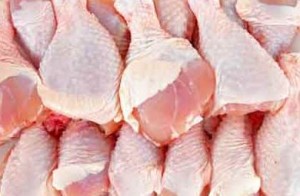Did you know that improperly cooled food is a possible cause of foodborne illnesses? There are a lot of American homes today that don’t know the possible results of cooling food the wrong way.
How to Freeze Foods Properly
Properly Freezing, Thawing, and Reheating Foods Safely helps prevent bacterial growth on our food. Don’t wait for hours before you refrigerate your food. Bacteria and other food-borne pathogens are proliferating on your food by the second, the longer you leave the food at the room temperature. If it’s hotter the pathogen growth will be faster.
When you buy foods, especially perishable ones like meat, etc., make sure that when you get home, immediately put food in the freezer. This will prevent the food from spoiling and becoming home to known food-borne pathogens around (like Salmonella, E.coli, Listeria and more).
Don’t overcrowd your fridge. Make sure that there is still space for air to circulate.
How can you achieve this? Follow the FIFO rule. This means consuming first the foods that you stored in the fridge first. The same goes when throwing out food stored in the fridge for too long.
Check foods stored in your fridge for quite a while if they’re already expired or nearing their expiry date. Throw them out if they’re past their expiration or best before date. If the food is nearing its expiry date, make sure that you consume it before that date. Take note of that the “best before” and “use by” warnings on the label are indications of the product’s freshness, as deemed by the manufacturer. They do not necessarily mean dates that indicate when food is going to spoil or when food is no longer safe to eat.
To prevent unknown elements that go into your food, make sure that you properly cover it with their own container lids or wraps.
How To Thaw Foods Properly
There are a lot of ways we typically do thawing and most of them are unsafe (like leaving the frozen goods on the counter) and can make bacteria grow faster on the foods. Here are the safest methods you can do to thaw food before you cook it.
Cooking Foods without Thawing – Don’t have time to thaw foods? Cook it straight. The FSIS USDA said that it is completely safe to do so, although you have to note that it takes a bit longer to cook the food.
Cold Water Thawing – This method is much faster than the fridge thawing method. Before thawing, make sure that the food package is leak-proof. Bacteria from surrounding environment can be introduced to the food if the package has holes or dents. It can make the food soggy too because of the moisture getting in.
Make sure that you have a container where you can submerge the entirety of the food. You don’t want to have a half of the product exposed to air and half of it submerge. Keep changing the water every 30 minutes until the food continues to thaw. Small packages can be thawed in an hour or even less. Larger package can take 2-3 hours.
Refrigerator Thawing – If you got lots of time on your hand, this method is good for you. A large food (like turkey) or even small ones takes at least a day to thaw. You may also want to check your fridge’s temperature, because there may be some areas in your fridge that may keep food colder and colder longer. Food will take longer to thaw in temperatures in 35 degrees Fahrenheit than of 40 degrees Fahrenheit.
Microwave Thawing – This method requires you to cook the food right away. While the food is being thawed in the microwave, portions of the food are already warmed, putting the food in the “danger zone” where microbes grow at a faster rate.
How To Reheat Foods Properly
Make sure that leftovers are cooked with an internal temperature of at least 165 degrees Fahrenheit. Keep them warm and consume immediately within two hours. If the food will take longer than 2 hours to reheat, reheat it in small batches to save time. Make use of a food thermometer to check the internal temperatures of the food. And take note: reheating foods in higher temperature doesn’t result in faster cooking; just because the food’s surface has been burnt to a crisp doesn’t mean the internal portions have been thoroughly cooked.
